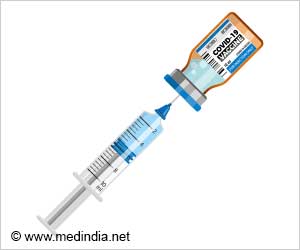Researchers at Chalmers University of Technology have discovered that treating yeast cells with graphene oxide reduces the quantities of aggregated amyloid peptides (4).
“This effect of graphene oxide has recently also been shown by other researchers, but not in yeast cells,” says Xin Chen, Researcher in Systems Biology at Chalmers and first author of the study. “Our study also explains the mechanism behind the effect. Graphene oxide affects the metabolism of the cells, in a way that increases their resistance to misfolded proteins and oxidative stress. This has not been previously reported.”
Investigating the Mechanisms of Alzheimer’s Disease Using Baker’s Yeast
In Alzheimer’s disease, amyloid aggregates cause different cellular metabolic abnormalities, such as stress in the endoplasmic reticulum – a crucial component of the cell that produces many of its proteins. This can impair cells’ ability to manage misfolded proteins, leading to an increase in their accumulation.
Advertisement
The aggregates also have an impact on the operation of the mitochondria, which are the cell’s powerhouses. As a result, the neurons are subjected to increased oxidative stress (reactive molecules known as oxygen radicals that destroy other molecules), to which brain cells are particularly sensitive.
The investigation was carried out by the Chalmers researchers using a combination of protein analysis (proteomics) and follow-up experiments. They used Saccharomyces cerevisiae yeast as an in vivo model for human cells. Both cell types have processes for managing protein quality that are extremely similar. The study team previously produced this yeast cell model to simulate human neurons afflicted by Alzheimer’s disease.
“The yeast cells in our model resemble neurons affected by the accumulation of amyloid-beta42, which is the form of amyloid peptide most prone to aggregate formation,” says Xin Chen. “These cells age faster than normal, show endoplasmic reticulum stress and mitochondrial dysfunction, and have elevated production of harmful reactive oxygen radicals.”
Graphene Oxide Nanoflakes Have High Hopes
Graphene oxide nanoflakes are two-dimensional carbon nanomaterials with distinctive features such as excellent conductivity and biocompatibility. They are widely employed in a variety of research initiatives, such as the development of cancer treatments, drug delivery systems, and biosensors.
The nanoflakes are hydrophilic (soluble in water) and interact well with biomolecules like proteins. When graphene oxide enters living cells, it can interfere with protein self-assembly processes.
“As a result, it can hinder the formation of protein aggregates and promote the disintegration of existing aggregates,” says Santosh Pandit, Researcher in Systems Biology at Chalmers and co-author of the study. “We believe that the nanoflakes act via two independent pathways to mitigate the toxic effects of amyloid-beta42 in the yeast cells.”
Graphene oxide acts directly to prevent amyloid-beta42 formation in one pathway. In the other case, graphene oxide acts indirectly through a (now unknown) mechanism that activates certain genes for stress response. This improves the cell’s resistance to misfolded proteins and oxidative damage.
The future treatment of Alzheimer’s sufferers remains a mystery. According to the Chalmers research group, graphene oxide has enormous potential for future research in the field of neurological illnesses. In a yeast model, the research team has already demonstrated that treatment with graphene oxide lowers the harmful effects of protein aggregation, particularly in Huntington’s disease.
“The next step is to investigate whether it is possible to develop a drug delivery system based on graphene oxide for Alzheimer’s disease,” says Xin Chen. “We also want to test whether graphene oxide has beneficial effects in additional models of neurodegenerative diseases, such as Parkinson’s disease.”
Proteins and Peptides in the Brain
Proteins and peptides are both made up of amino acids and are fundamentally the same sort of molecule. Peptide molecules are smaller and less intricate in structure, often containing less than 50 amino acids. Proteins and peptides can both become distorted if they fold incorrectly during cell development. When a large number of amyloid-beta peptides clump together in the brain, the aggregates are classed as proteins.
References:
- Kumar A, Sidhu J, Goyal A, Tsao JW. Alzheimer Disease. 2022 Jun 5. In: StatPearls [Internet]. Treasure Island (FL): StatPearls Publishing; 2023 Jan-. PMID: 29763097.
- https:www.alzint.org/about/dementia-facts-figures/dementia-statistics/#:~:text=There%20are%20over%2055%20million,will%20be%20in%20developing%20countries.
- Mattap SM, Mohan D, McGrattan AM, Allotey P, Stephan BC, Reidpath DD, Siervo M, Robinson L, Chaiyakunapruk N. The economic burden of dementia in low- and middle-income countries (LMICs): a systematic review. BMJ Glob Health. 2022 Apr;7(4):e007409. doi: 10.1136/bmjgh-2021-007409. PMID: 35379735; PMCID: PMC8981345.
- Xin Chen, Santosh Pandit, Lei Shi, Vaishnavi Ravikumar, Julie Bonne Køhler, Ema Svetlicic, Zhejian Cao, Abhroop Garg, Dina Petranovic, Ivan Mijakovic. Graphene Oxide Attenuates Toxicity of Amyloid‐β Aggregates in Yeast by Promoting Disassembly and Boosting Cellular Stress Response. Advanced Functional Materials, 2023; DOI: 10.1002/adfm.202304053
Source: Medindia



